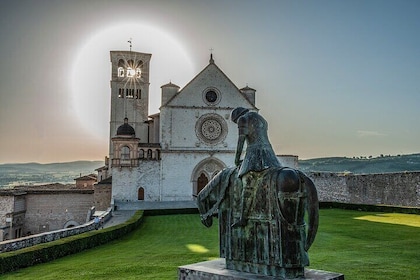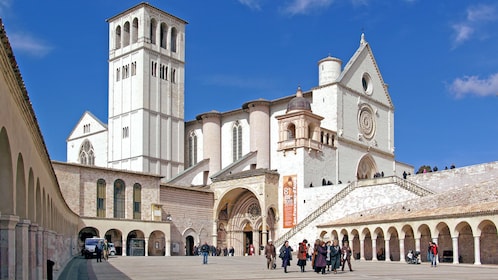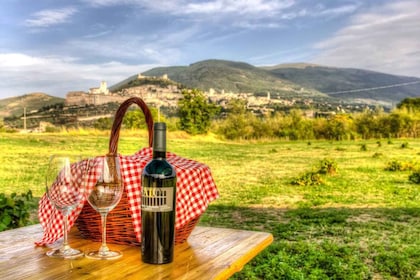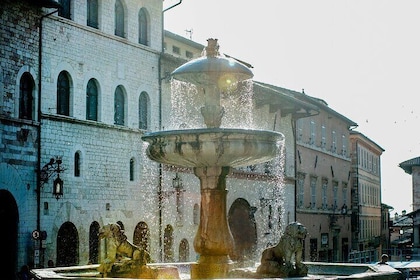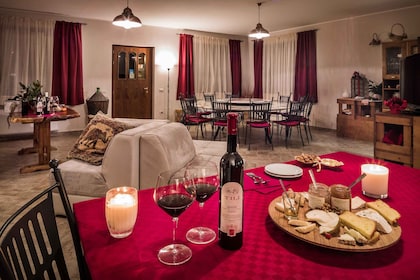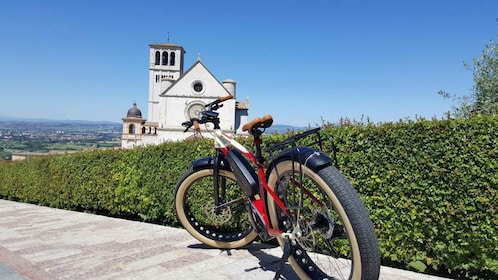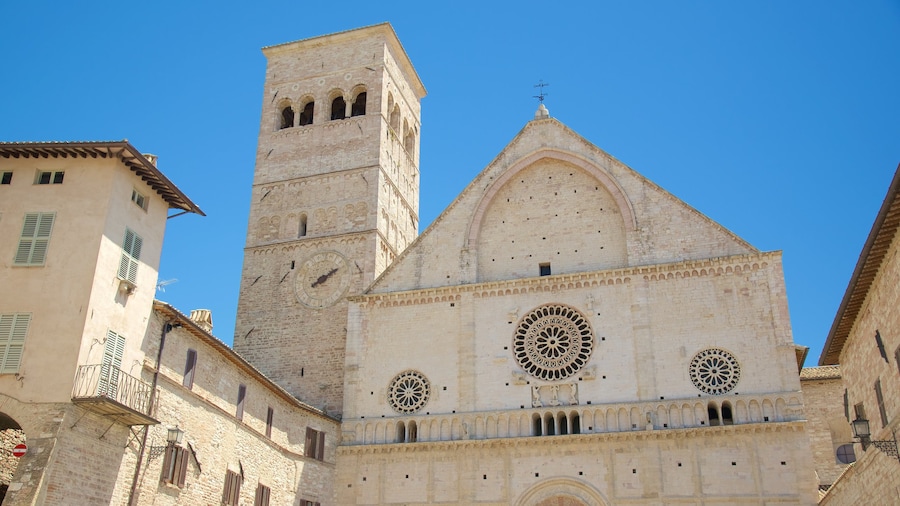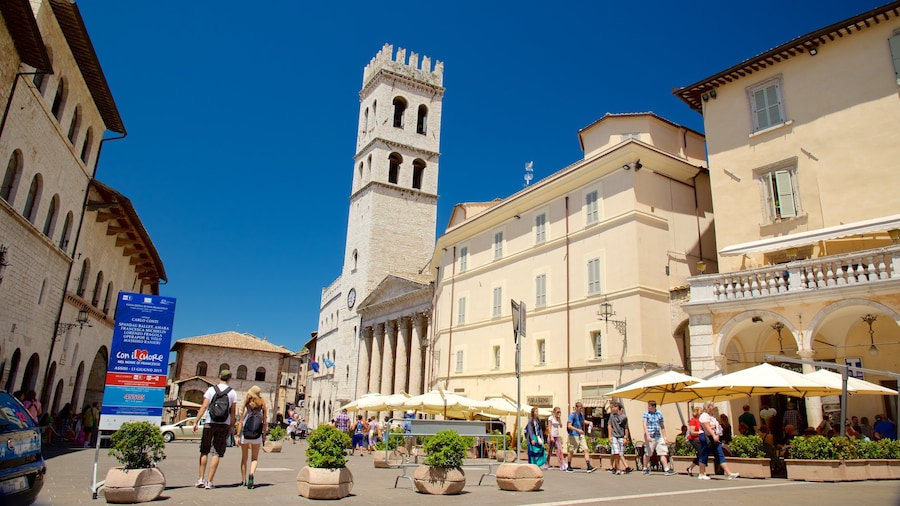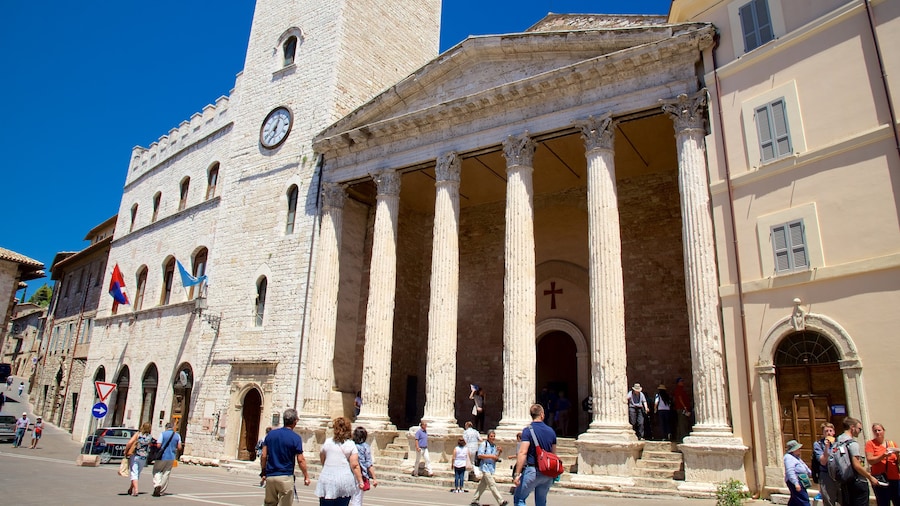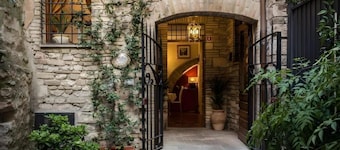See the tomb of St. Clare and kneel before the miraculous crucifix that spoke to St. Francis in this magnificent 13th-century Gothic church.
Constructed between 1257 and 1265, the Basilica of Santa Chiara is of great historic and spiritual significance. The church is named after St. Clare, a friend and protégé of St. Francis, who founded the Order of Poor Ladies, which still has thousands of members today. Take advantage of the excellent photo opportunities available in the adjoining piazza, from which you have wonderful views of the valleys south of Assisi.
Before entering the Basilica, admire the beautiful western façade, constructed of alternate strips of pink and white stone, with massive supporting arches on either side. Pay special attention to the exquisitely carved wheel-shaped rose window, which embellishes the front wall of the church and is flanked by reliefs of lions.
Move slowly through the dimly lit nave of the church until you reach the small apse, which features a 13th-century painted crucifix hanging above the choir. Spend a moment examining the preserved 12th-century wooden crucifix in the Oratory of the Crucifix, which adjoins the nave to the south. This icon supposedly spoke to St. Francis at San Damiano, ordering him to give up his life of luxury and excess to serve God and the church.
Descend into the spacious neo-Gothic crypt to see the tomb of St. Clare. Her body is preserved at the east end of the crypt and a layer of wax protects her face. At the west end of the crypt you can find a number of important Franciscan relics, such as tunics worn by Francis and Clare and locks of Clare’s hair cut by Francis. The crypt was built in the 19th century following the discovery of St. Clare’s body in 1850, which had remained hidden below the main altar for 6 centuries.
There is no fee to enter the Basilica of Santa Chiara, which is open daily, though times vary according to the season and it is usually closed during lunch hours. Visit the basilica in the morning to avoid the crowds from daily bus tours. You may witness a morning mass ritual, which shows that the basilica is not simply a relic of history, but a functioning space for religious worship.




